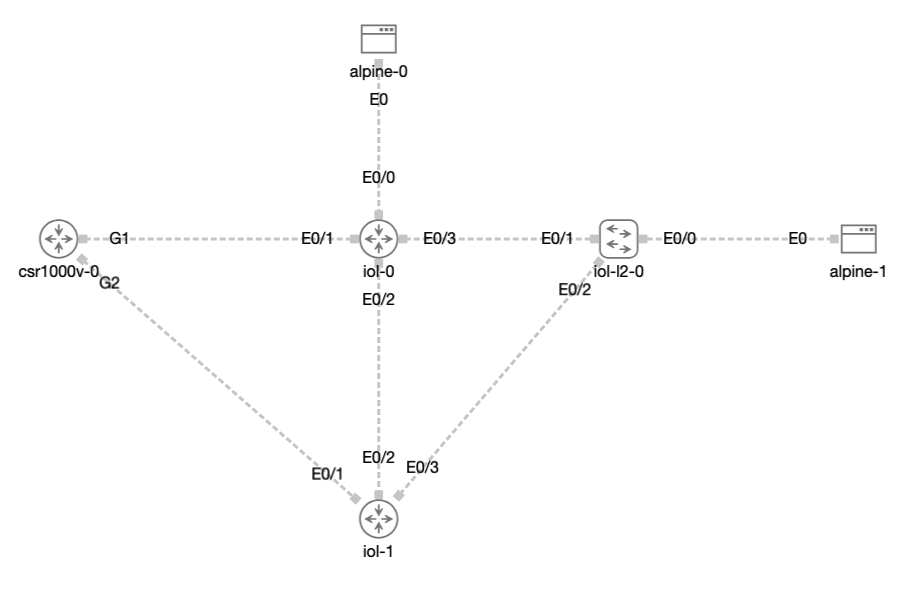IOL
Overview
IOL nodes are an implementation of Cisco IOS-XE that does not run as a full virtual machine. Therefore, the IOL nodes generally consume much less CPU and memory than an equivalent IOSv or CSR 1000v node in your lab. The IOL images are built from the latest Cisco IOS-XE software and support 16 Ethernet interfaces. IOL provides full layer-3 control-plane and data-plane functionality. Layer-2 switching is not supported, but layer-2 encapsulations, such as EoMPLS and L2TPv3, are supported.
Limitations
The IOL images do not support the programmability features that are available in other VM images based on IOS XE, like CSR 1000v. For example, the IOL images do not support restconf or netconf. You also cannot create EEM applets to add to the event manager on the device.
IOL's normal L1 signaling mechanism is disabled. Because of that, turning OFF an IOL interface has no effect. Turning the link OFF stops forwarding packets, but there's no "link loss". From the inside of the IOL node, the interface will still be shown as UP. This behavior matches that of other node types in CML, but it may be unexpected if you have used other IOL images in the past.
Features Tested with CML
Each CML release is tested with the bundled version of IOL XE. The tests validate the following features:
| Test Name | Result |
|---|---|
| CDP | Pass |
| ping | Pass |
| OSPF single-area | Pass |
| NAT - static | Pass |
| HSRP | Pass |
| DHCP | Pass |
| Routed subinterface | Pass |
The lab used for the tests is similar to the IOSv Feature Tests lab:

CDP
- peer device is detected on the interface and listed in the CDP table.
- Neighbor types: IOL, IOL-L2, CSR 1000V
Ping test
- Sending ICMP Echo packets to the neighbor IP
- Direct reachability and reachability via routing
OSPF Single-Area
- loopback interfaces configured
- point-to-point networks configured on links between routers
- all interfaces in area 0
- OSPF establishes connectivity
- Can ping loopback interfaces on different routers
NAT: Static
- Alpine Linux VM connected to the router, configured static IP on VM and on router interface
- static translation configured on a router
- loopback interface with the translated network configured, and included in OSPF
- ping of the untranslated VM IP from the router
- ping of the translated VM IP from a different router
HSRP
- two IOL routers, interconnected by an IOL-L2 switch
- Alpine VM connected to the switch
- HSRP configured on the two routers
- Ping between: VM IP to HSRP IP
- Verification: ping between: VM IP to SVI IP; SVI IP to HSRP IP; VM and SVI IP to interface IP
DHCP
- DHCP pool configured on a router
- Alpine Linux VM connected through the IOL-L2 switch
Routed subinterface
- created routed subinterface on two IOL routers
- Interconnected them over the IOL-L2 switch; configured interfaces as trunks; configured VLANs on IOL-L2
- Configured an IP on the SVI for that VLAN on IOL-L2